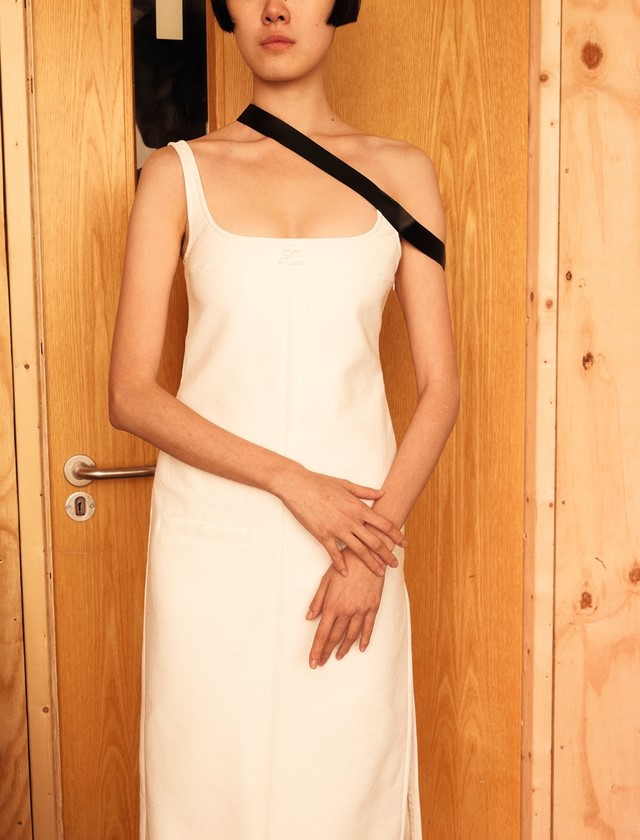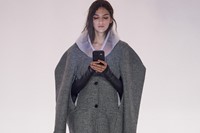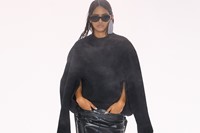In the latest issue of AnOther Magazine, Courrèges creative director Nicolas Di Felice speaks about “trashy” music, respecting the legacy of André Courrèges, and his personal vision for the future
This article is taken from the Spring/Summer 2023 issue of AnOther Magazine:
Music came first for Nicolas Di Felice, who has been creative director of the 60s-founded futurist fashion label Courrèges since September 2020. There wasn’t a great deal for a kid to do while growing up on the outskirts of a small Belgian city in the Nineties, so he would sit down in front of the television and lose himself in episodes of what he calls “Belgium’s answer to Top of the Pops”. His interest in fashion was a by-product of these binges – Di Felice became as obsessed with what the show’s performers wore as with what they were playing.
“Every band on there had its own style – I quickly realised you could build your identity through garments,” he says over a crackly phone line from the mirrored, fittingly discotheque-esque Courrèges studio on a freezing cold morning in Paris. “More specifically, I really loved [the NYC dance music group] Deee-Lite. I loved clothes from the Sixties and the contrast between what they wore and their music. I still have a strong image of these silver, glittery, space-age looks they wore in one performance.” Which sounds very Courrèges.
Leaving behind his hometown of Charleroi, Di Felice enrolled at the revered La Cambre school in Brussels, where, alongside his fashion studies, he began turning out hypnotic techno tracks from the confines of his bedroom. A position at Balenciaga that began in 2008, working under the tutelage of Nicolas Ghesquière, put a pin in that, however. “I just didn’t have the time to experiment anymore,” he says. At least, not in music.
That stretch at Balenciaga further weaves together the stories of André Courrèges and Di Felice. Courrèges worked for Cristóbal Balenciaga himself for 11 years as a tailor, before the Spanish designer dug into his own pocket to help fund what would become the house of Courrèges.
And there’s even a link to music. Breaking with the tradition of silent salon shows, Courrèges presented his revolutionary Sixties clothes – all-white disco futurism and square-toed go-go boots – to strummed guitar tracks or throbbing drumbeats, underscoring the youth and dynamism of garments often co-opted by musicians of the time, like Françoise Hardy.
Di Felice’s work at Courrèges today fuses these shared passions, too: his debut collection at the house, named I Can Feel Your Heartbeat, paid tribute to the locked-down kids who couldn’t dance during the Covid-19 pandemic. For a film shot at the Paris nightspot La Station, Di Felice took influence from the house’s archives for his cut-out vinyl mini dresses, cinched trenches and second-skin, poppy red all-in-ones. Then there was his Spring/ Summer 2022 collection, presented at the sprawling Parisian park Bois de Vincennes – the site of his first kiss with his boyfriend – which channelled the feverish, heart-swelling excitement of a day rave, complete with clubwear, bomber jackets, metallic boots and, of course, a pumping soundtrack.
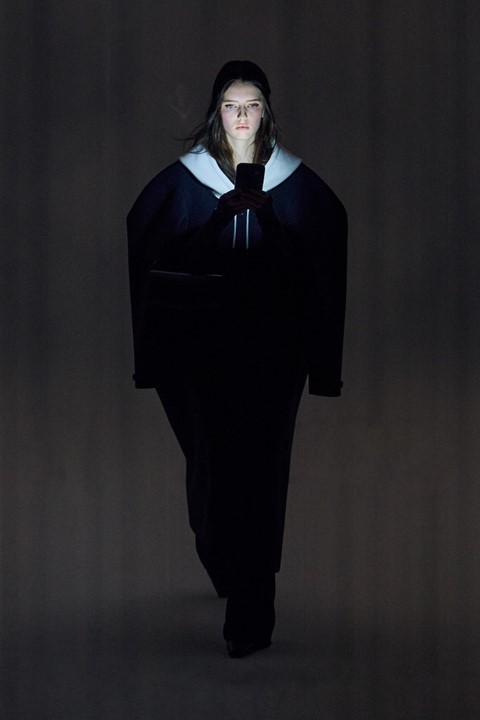
More recently, the idea for a key piece from his Spring/Summer 2023 collection – a jacket with straps inside, allowing it to be strung across the shoulders like a bag – came to him while he was out clubbing, got too hot and couldn’t find a cloakroom. On a night out during his early days at La Cambre he spotted, and became mesmerised by, a girl dancing in front of a speaker – his first project on the course stemmed from that hazy, euphoric moment in the small hours of the morning.
When it comes to his design ethos, Di Felice’s desire to expand the house’s vocabulary and captivate a new audience is clear: he is determined to design for real people living real lives, and perhaps to contradict some of our notions about Courrèges. The clothes are insouciant rather than aloof, sexy instead of cold. With micro minis, neat little boxy jackets, slinky dresses for the girls and slick body-conscious tailoring and rough-hewn denim for the boys (swapping between the two is fully encouraged), Di Felice’s Courrèges has found legions of fans in Paris and beyond.
“Before I came to the house I read a lot of André Courrèges’s old interviews,” Di Felice says. “Everybody always thought he was about the ‘space age’ and going to the moon, but maybe those people never actually heard him speak. He never said that. He was addressing the people on the street, which is so important to me as well. I’m passionate about people actually wearing the clothes we make.” When Di Felice joined Courrèges, conversations with the brand about lowering its price points were surprisingly easy, he recounts, meaning a lot more people can buy into his vision. It makes sense that he wants to extend what he does to as many people as possible – Di Felice is warm, open and very funny.
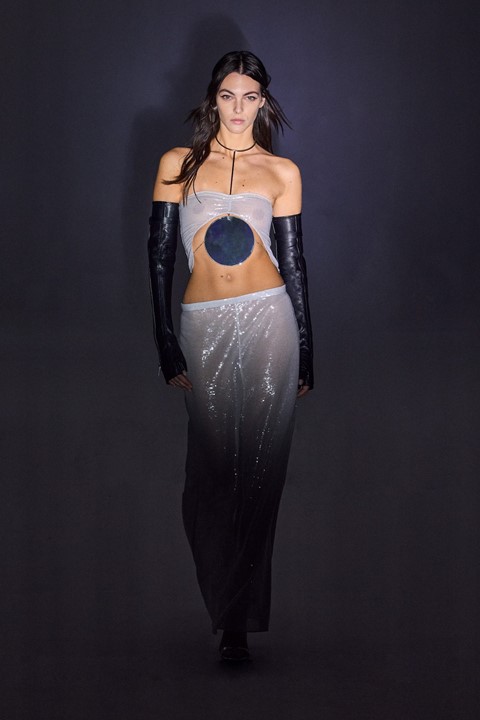
Though the designer feels the weight of leading Courrèges forward on his shoulders – “It’s a bit like being a dad to a family sometimes. I always want to be conscious of my team’s wellbeing and make sure they’re doing OK,” he says – he has a great support network around him and being “surrounded by love” helps him to put in place the kind of healthy boundaries that can elude others in the industry. He also still loves to party and enjoys the catharsis of the dancefloor after a long week or season.
The smoky, red-lit techno raves Di Felice has thrown in multi-storey concrete car parks and cavernous underground spaces across Paris during the ready-to-wear collections – which speak more to industrial Berlin clubs than they do your typical PFW cocktail – are as anticipated as his runway shows. For Di Felice it’s as much about unity as it is about celebrating a season’s hard work.
“I’m surrounded by music all the time at Courrèges – you would laugh if you heard some of it. One minute it’s some trashy remix of a remix, the next it’s a classical composition,” he says. “What I love about fashion and music is that the movement brings people together and that’s one of my goals in this job. For me it’s one of the best ways to open the fashion world up, when historically it’s been so closed off. Bringing people together is everything.”
This story features in the Spring/Summer 2023 issue of AnOther Magazine, which is on sale now. Order here.
